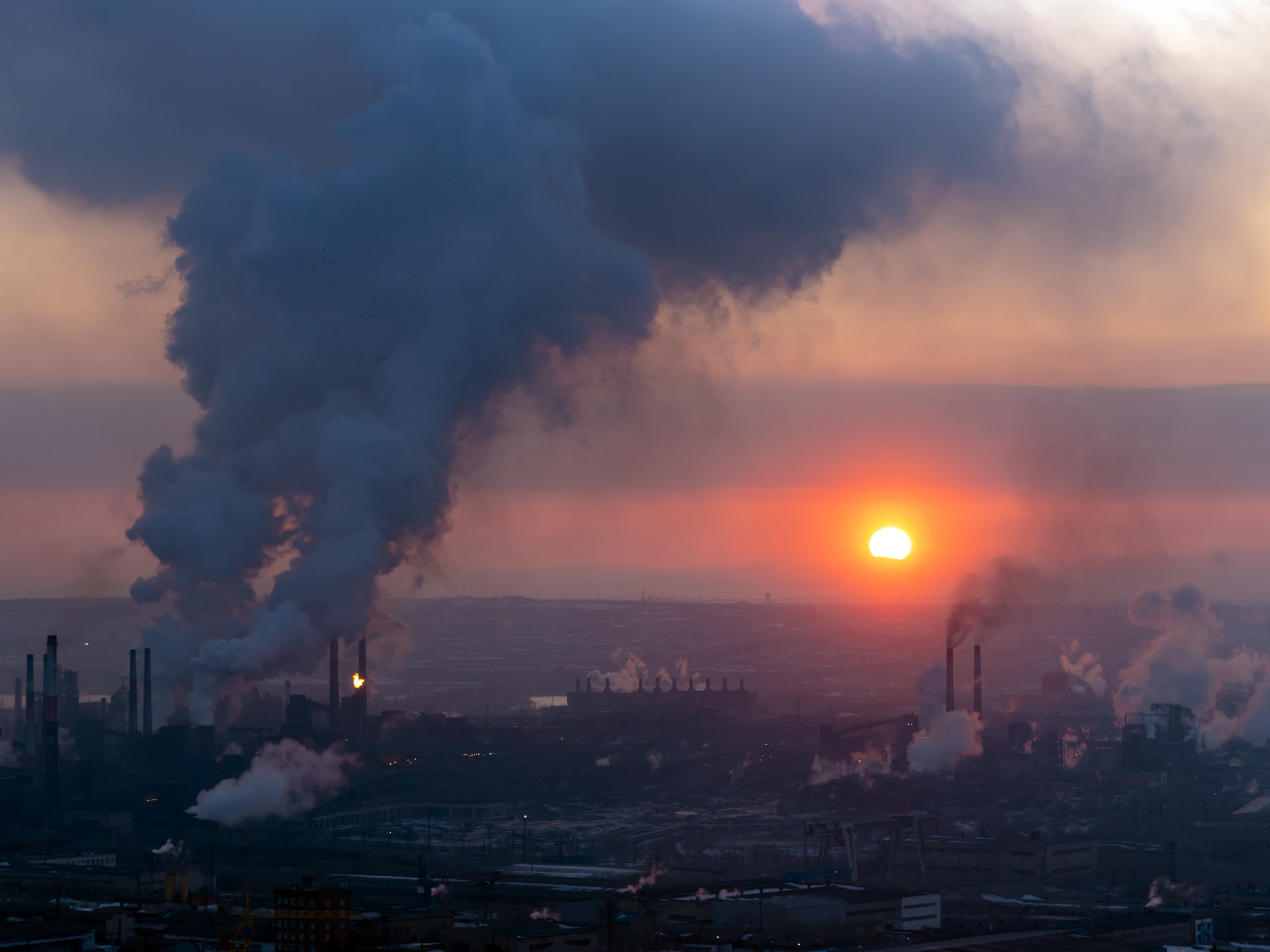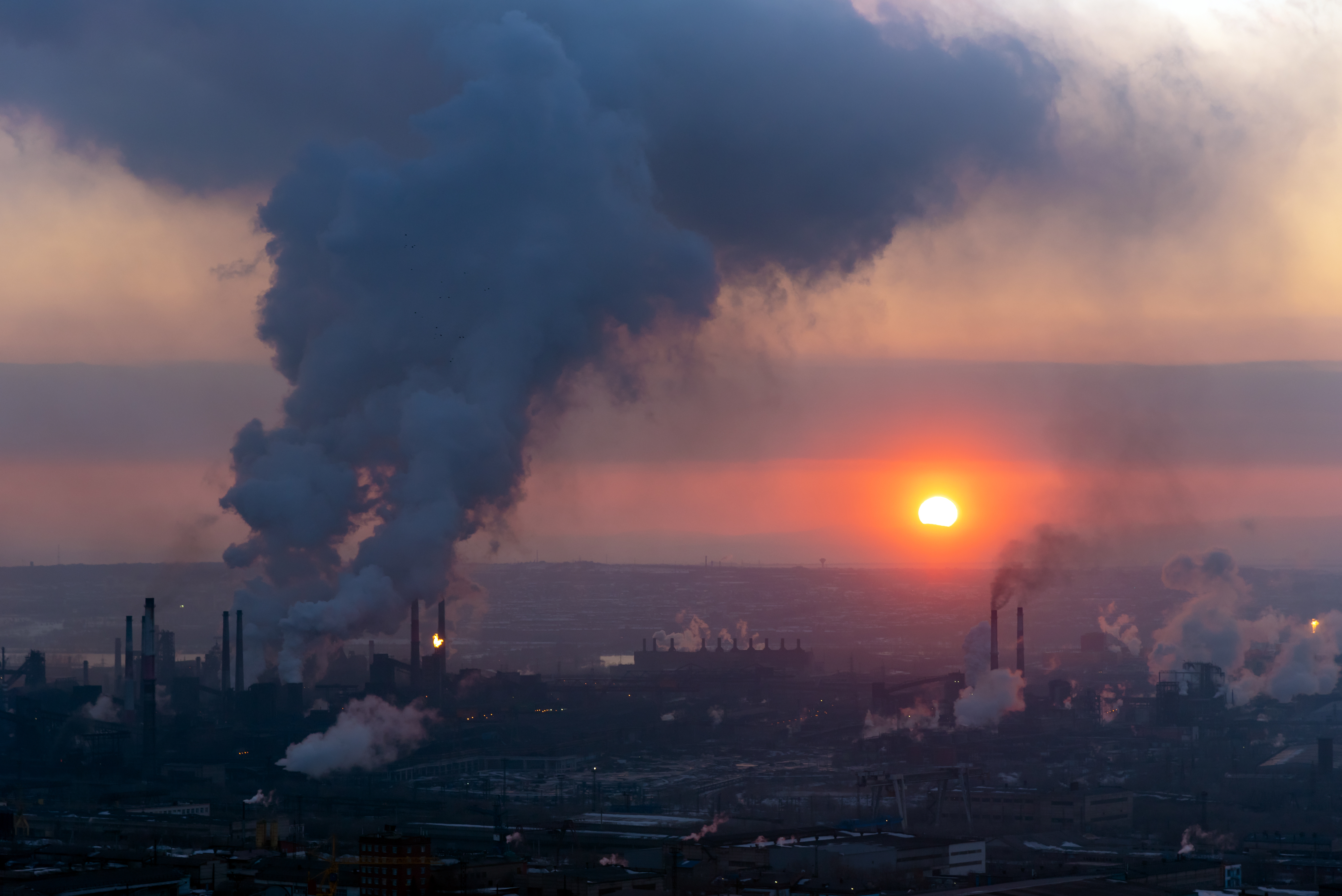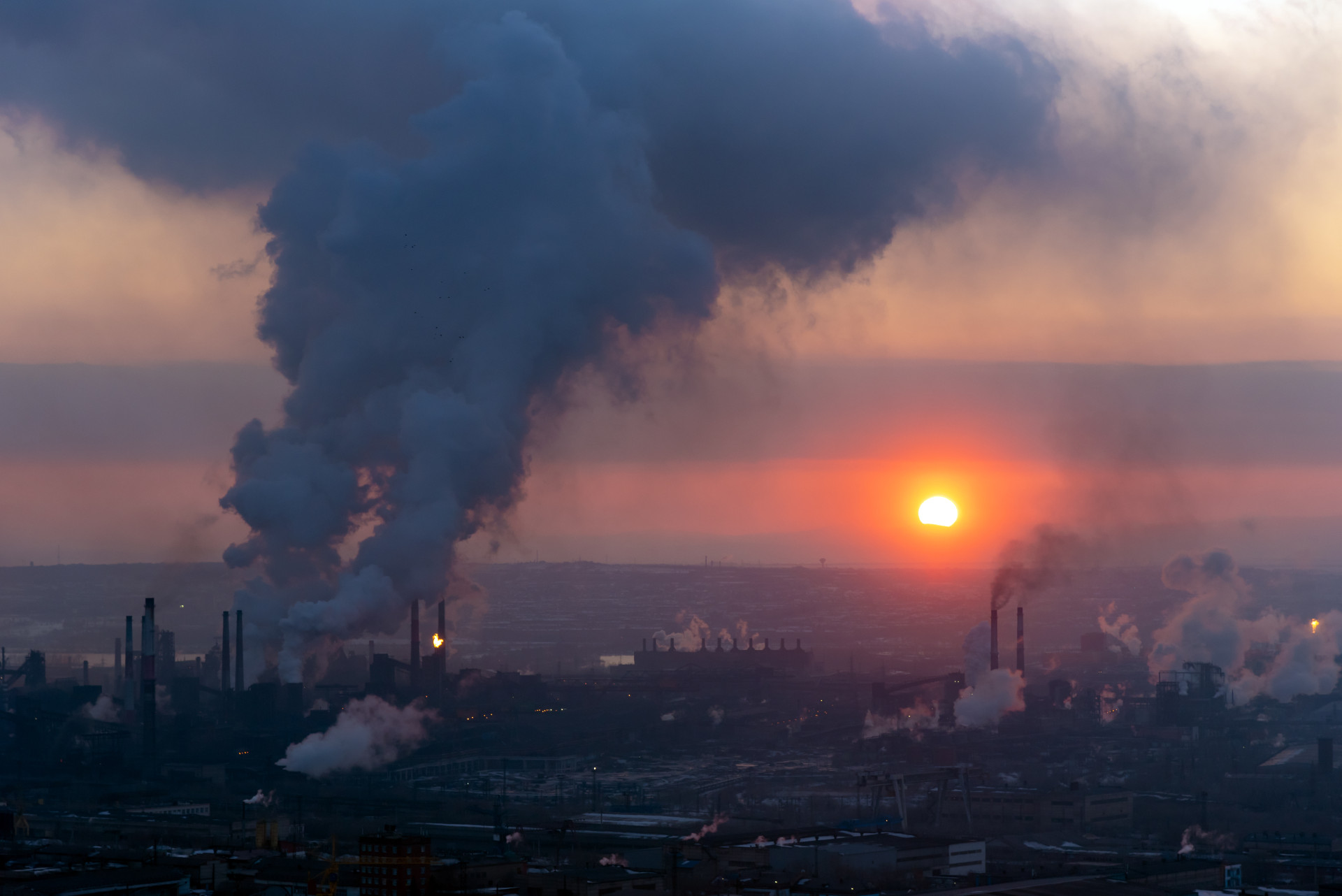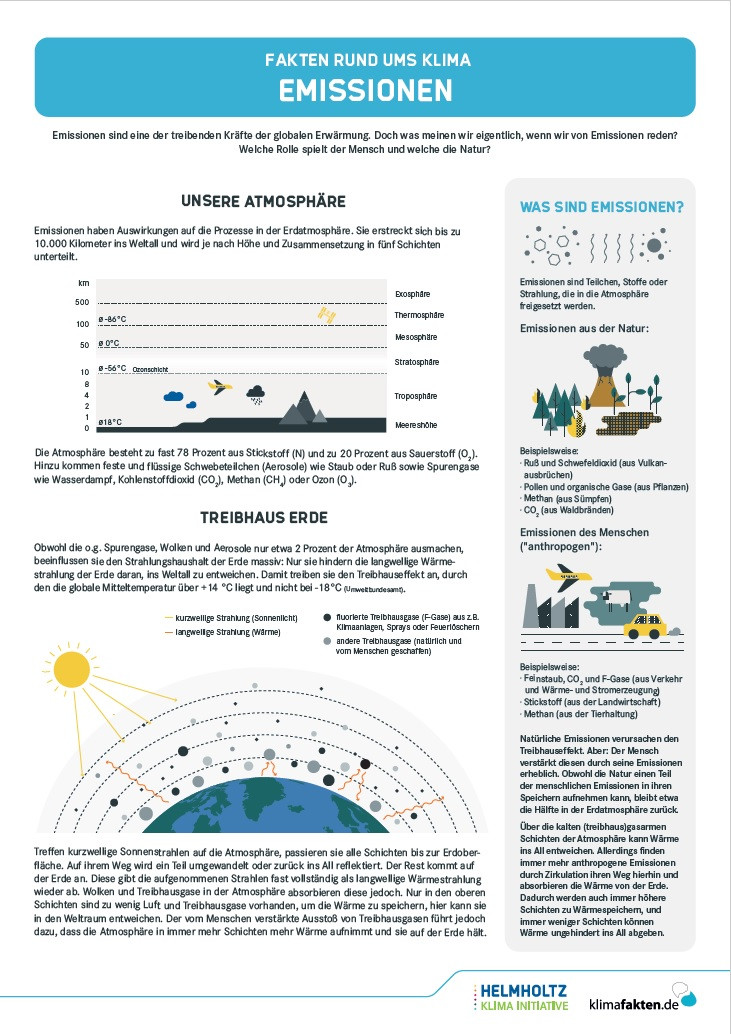What are emissions and how do they occur?


Emissions are one of the driving forces behind global warming. They are particles, substances, or radiation released into the atmosphere. Emissions can occur naturally, such as soot from volcanic eruptions or CO₂ from forest fires. There are also anthropogenic emissions that are caused by human activity. These include particulate matter, CO₂ and fluorinated gases from traffic as well as from heat and power generation, and also methane from livestock farming.
Greenhouse gases
Emissions in the Earth’s atmosphere that have an impact on the Earth’s energy balance and thereby cause what is called the greenhouse effect are known as greenhouse gases. The best-known greenhouse gases, namely carbon dioxide (CO₂), methane, and nitrous oxide, are found naturally in the atmosphere in low concentrations only. Due to various man-made sources, however, the share of these greenhouse gases present in the atmosphere has increased significantly since the beginning of the last century.
The best-known greenhouse gases:
- CO₂: Carbon dioxide is a water-soluble gas that occurs naturally in the air. Trees and plants convert CO₂ into energy and oxygen. Humans also cause CO₂ emissions, such as by burning petroleum, coal, and natural gas. In the atmosphere, the gas obstructs the radiation emitted by the Earth from escaping into space.
- Methane (CH₄) is approximately 25 times more harmful to the climate than CO₂. While its average lifetime in the atmosphere is much shorter at around 12.4 years, methane has a very powerful warming effect over a short period of time. More than 63 percent of methane emissions are produced in agriculture, during soil cultivation and fertilization, or by livestock farming. In the atmosphere, CH₄ is eventually converted into carbon dioxide through various reactions.
- Aerosols are fine liquid droplets or solid particles suspended in the atmosphere, such as dust, soot, or steam. They remain in the troposphere anywhere between one day and two weeks and in the stratosphere for about a year. Aerosols reflect solar radiation, thereby slowing the increase in the atmosphere’s temperature, which would be much higher without them.
- F-gases: Many fluorinated greenhouse gases stay in the atmosphere for a very long time. They do not occur naturally but are manufactured for a specific use, for example as propellants in spray cans, as coolants and extinguishing agents, and in insulating materials.
CO₂ equivalents
In order to compare the global-warming potential of the various greenhouse gases, the amounts of these gases and their impact on global warming are converted to equivalent amounts of metric tons of CO₂ with the same global-warming potential. These are referred to as CO₂ equivalents. Greenhouse gas statistics list one metric ton of methane, for example, as 25 metric tons of CO₂ equivalents.
Source: Umweltbundesamt

